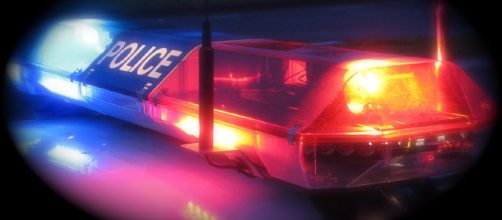Early Tuesday morning (Mar. 20), Great Mills High School in southern Maryland came under attack by a school shooter. The high school that serves over 1,500 students in this rural and suburban area found itself on lockdown and surrounded by local and state police, fire and rescue teams, the ATF and FBI, moments after shots rang out. All of this, just a week after their schoolwide walk-out to demonstrate solidarity in protest of school Gun Violence.
Frantic parents arrived at the school attempting to find their children and determine their safety.
Many were frustrated as they were told to go to the reunification center at Leonard Town High School Campus and wait. Although frustrating and necessary, there was a clear system in place and up-to-date information was streamed to parents as soon as it became available.
What happened?
According to Sheriff Tim Cameron of St. Mary’s County, 17-year-old Austin Wyatt Rollins allegedly entered the school at 7:45 am/EST, approached a 16-year-old female student and opened fire on her in the hallway. The same round that struck the girl is thought to have hit a 14-year-old male student who was nearby.
When the school shooting took place, the School Resource Officer (SRO), former SWAT and Deputy First Class Gaskill, who had just been assigned to the school last week, was inside the school when he was alerted to shots being fired.
Unlike the Parkland SRO, this officer sprang into action and ran in the direction of the gunman.
After reaching hallway F, there was simultaneous gunfire from the SRO and the shooter. School officials and the school nurse rushed to the scene and administered first aid to the shooter and victims. However, the teen-gunman, who was shot, did not survive his injuries and was later pronounced dead at a nearby medical center.
Authorities are investigating the shooting, and putting the pieces together. One query to be answered is whether the shot fired by the SRO struck the shooter, or if the shooter turned the gun on himself. This question arose because Officer Gaskill was not injured or shot but the shooter did discharge his weapon.
Why such violence?
It is unclear what motivated the teen to shoot the female student. The girl was transported to a nearby trauma center and is said to have life-threatening injuries. The 14-year-old boy is now reported to be in a stable condition.
Police say early indicators in the investigation point to a soured relationship of some sort between the shooter and the girl. Officials plan to review events leading up to the shooting, speak to witnesses and look at the gunman’s social media pages to complete the picture of this horrific puzzle.
Multiple fatalities avoided
First responders reported that the situation was contained by midmorning and the threat was removed almost immediately after shots were fired.
It would appear that Great Mills is a town that is prepared to handle a school community crisis. This was also noted by the governor and law enforcement agencies that assisted Great Mills' police officers.
Sheriff Cameron attributed their knowledge of what to do in these situations to their regular school drills, ongoing briefings, training and collaborative planning with allied agencies and school officials.
It’s not over
This was not a massive school shooting like Sandy Hook or Parkland but the seriousness of the issue remains unchanged. There has been much discussion and debate about what to do about the school shootings epidemic, however, no real resolve or action has resulted. And still, thousands of schools across America continue to be vulnerable because they are under-funded and under-resourced.
The conversations surrounding gun laws may seem to have tempered but the voices of our youth won’t be silenced. This shooting adds gasoline to the flames of necessity.
Unfortunately, this senseless shooting comes just days before the Parkland kids and teens across the US planned to march in protest against school gun violence. The movement will certainly gain more momentum as this only fuels their purpose.
This week's historical march will most assuredly be powerful because they march in advocacy of adequate school safety and the right to learn unencumbered. They march to balance the laws of what is just, and what is fair. They continue to speak through their trauma and ignite the nation to join in the protection of their lives, liberties, and the pursuit of happiness.
Now, the question is will lawmakers finally listen--and do something?


